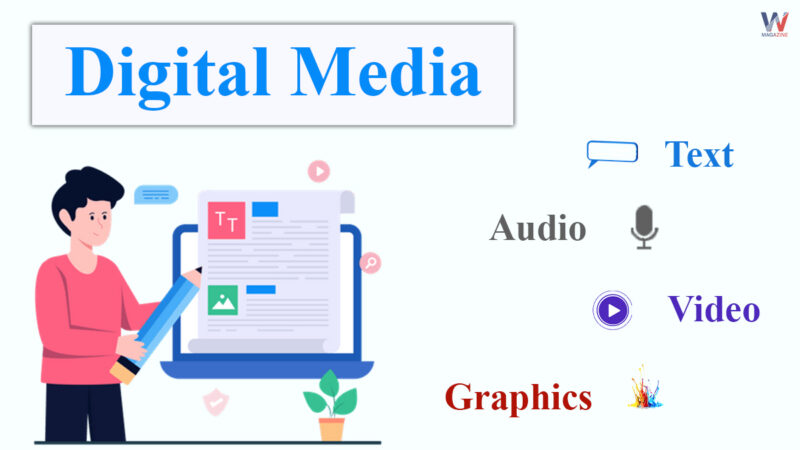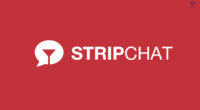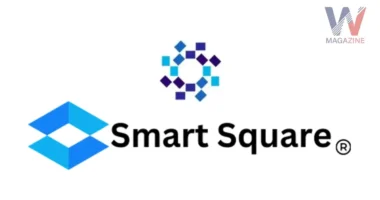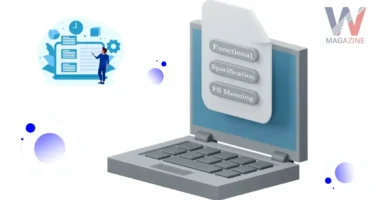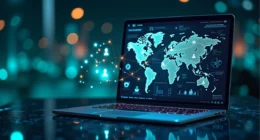Table of Contents
Digital media refers to any form of communication that uses encoded machine-readable data formats. This type of content can be created, shared, modified, viewed, listened to and stored on digital electronic devices such as computers and smartphones. Unlike analog media, digital media uses digital data storage methods and digital broadcasting.
Digital media includes text, audio, video and graphics. These are shared over the internet, allowing people to view or listen to them online. In simple terms, digital media is any information that is digitized and shared through screens or speakers.
In 2020, people spent 27.9 billion hours watching content on digital media platforms like YouTube, Vimeo and Twitch. One of the key reasons for this surge in viewership is the ability of these platforms to connect people easily which is a major part of the digital revolution.
Examples
Digital media includes a wide variety of content such as software, digital images, videos, video games, web pages, social media, databases and digital audio files like MP3s. It also covers electronic documents and e-books. Unlike print media such as books, newspapers and magazines or traditional media like photographic film, audio tapes and video tapes, digital media is created, stored and shared in digital formats.
Digital media has greatly influenced society and culture in many ways. Along with the internet and personal computers, it has brought major changes to fields like publishing, journalism, public relations, entertainment, education, commerce and politics. This has led to new challenges for copyright and intellectual property laws, encouraging a movement where creators voluntarily give up some legal rights to their work.
The widespread use of digital media suggests we are entering a new era known as the Information Age. This could lead to a paperless society where all media are created and consumed digitally. However, there are still challenges to this digital shift such as outdated copyright laws, censorship, the digital divide and the risk of a “digital dark age” where older media might become inaccessible due to new or upgraded systems.
Overall, digital media has a significant and complex impact on society and culture.
Business Model
Digital media platforms like YouTube use a three-part business model. They offer information and entertainment (infotainment) to the public, usually for free. At the same time, they capture users’ attention and collect their data which is then sold to advertisers. This model is designed to keep users engaged on the platform as much as possible.
Paid Media
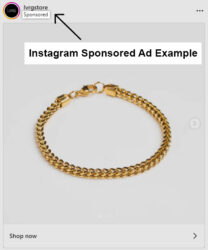
Paid media refers to advertising channels that businesses pay to use. This includes traditional media like TV, radio, print and outdoor ads, as well as online and digital media like paid search ads, display ads on websites and social media, mobile ads and email marketing. In this model, businesses create sponsored content and pay platforms like Instagram to display these ads in users’ newsfeeds. These ads, often called promoted or sponsored posts (shown in the image) are then seen by the platform’s users.
Owned Media
Owned media refers to digital assets and channels that a company or individual controls and manages. This includes websites, social media profiles (like Facebook), blogs and any other content platforms that the entity owns and operates. The entity can be a business like Wordle Magazine or a person managing their online presence.
Earned Media
Earned media refers to publicity gained through channels like television, newspapers blogs or video sites without direct payment or control by marketers. It’s essentially free publicity driven by viewers, readers or users who are interested in the content. This includes online word-of-mouth, such as viral trends, mentions, shares, retweets, reviews, recommendations or content from third-party websites. When a product or service is so good that people naturally share it on their social media, it generates a lot of earned media. This type of media is seen as more credible and transparent compared to paid or owned media.
History
The idea of using machines to encode and process information was first envisioned by Charles Babbage in the early 1800s. He designed machines called the Difference Engine and the Analytical Engine to reduce errors in calculations. Between 1822 and 1823, mathematician Ada Lovelace wrote the first instructions for calculating numbers on Babbage’s machines which are now considered the first computer program. Although these machines were designed for analytical tasks, Lovelace foresaw their potential social impact.
She believed that the ability to combine truths and formulas using these machines could lead to new scientific discoveries and deeper research. Other early examples of machine-readable media include instructions for player pianos and weaving machines.
In 1986, less than 1% of the world’s media storage was digital. By 2007, this number had jumped to 94%. The year 2002 is considered the start of the digital age because it was the first time that more information was stored digitally than in analog formats.
Digital Computers
Early calculating machines like Babbage’s engines, player pianos and jacquard looms used machine-readable media but were analog, relying on physical, mechanical parts. Digital media truly began with the advent of digital computers. These computers use binary code and Boolean logic to store and process information, enabling one machine to perform various tasks.
The first modern, programmable digital computers, the Manchester Mark 1 and the EDSAC, were invented between 1948 and 1949. While different from today’s computers, these early machines used digital software to control their operations. They encoded information in binary (A system of ones and zeros) forming the foundation of digital media.
“As We May Think”
Although digital media became common only in the late 20th century, its conceptual foundation dates back to scientist and engineer Vannevar Bush. In his famous 1945 essay “As We May Think” published in The Atlantic Monthly, Bush imagined a system of devices to help scientists, doctors and historians store, analyze and communicate information. He called this imaginary device a “memex.”
Imagine the owner of a memex is researching the origin and properties of the bow and arrow, specifically why the short Turkish bow was superior to the English longbow during the Crusades. He has many relevant books and articles stored in his memex. First, he looks through an encyclopedia and finds an interesting but brief article which he leaves open. Next, he finds another useful item in a history book and links the two together. He continues this process, creating a trail of connected items. Sometimes he adds his own comments, linking them to the main trail or attaching them to specific items.
When he discovers that the elastic properties of materials were important to the bow’s effectiveness, he follows a side trail into textbooks on elasticity and tables of physical constants. He even adds his own handwritten analysis. In this way, he creates a comprehensive trail of his research through the various materials available to him.
Bush hoped that scientists would create the memex after World War II. Although his essay was written before digital computers existed, “As We May Think” foresaw the social and intellectual benefits of digital media. It laid the groundwork for digital scholarship, the World Wide Web, wikis and social media. Even at the time of its publication, it was recognized as an important work.
Impact
Digital Revolution
Since the 1960s, computing power and storage capacity have grown exponentially, thanks to advancements in MOSFET scaling and Moore’s law. This has allowed personal computers and smartphones to give billions of people the ability to access, modify, store and share digital media. Many devices, like digital cameras and drones can create, transmit and display digital content.
With the rise of the World Wide Web and the Internet, digital media has transformed 21st-century society, similar to how the printing press revolutionized the world. This rapid and widespread change has shifted the economy from an industrial focus to an information-based one, marking the start of a new era known as the Information Age or the digital revolution.
The shift to digital media has created some confusion about definitions. Terms like digital media, new media and multimedia all relate to both technological advances and cultural impacts. When digital media blends with other media and cultural or social factors it is often called new media.
This transition requires new communication skills known as transliteracy, media literacy or digital literacy. These skills include traditional reading and writing as well as navigating the Internet, evaluating sources and creating digital content.
As we move toward a fully digital, paperless society, there is a concern about entering a digital dark age, where older media might become inaccessible on modern devices or through current methods of scholarship. Digital media has a significant and complex impact on society and culture.
On April 3, 1973, Martin Cooper, a senior engineer at Motorola made the first mobile phone call. He called a rival telecommunications company and said, “I’m speaking via a mobile phone.” Ten years later, Motorola released the Motorola DynaTAC, the first mobile phone available to the public. In the early 1990s, Nokia launched the Nokia 1011, the first mass-produced mobile phone.
Since then, the number of smartphone users has grown rapidly changing the commercial landscape. Today, Android and iOS dominate the smartphone market. A study by Gartner found that in 2016, about 88% of smartphones worldwide were Android while iOS had a 12% market share. Additionally, around 85% of mobile market revenue came from mobile games.
The impact of the digital revolution can be seen in the number of mobile smart device users worldwide, divided into smartphone users and smart tablet users. Currently, there are 2.32 billion smartphone users globally, a number expected to exceed 2.87 billion by 2020. In 2015, the number of smart tablet users reached 1 billion, making up 15% of the world’s population.
The rise of smart device users highlights the impact of digital media today. As the number of smartphone and tablet users grows, so do their uses. A smartphone or tablet can serve hundreds of daily needs and there are over 1 million apps available on the Apple App Store.
Each time a user opens their Apple or Android device, they encounter digital advertising, showcasing the influence of the digital revolution. This has led to a total of 13 billion dollars being paid to app developers over the years. The growth in smart devices has driven the creation of millions of apps many of which generate income through in-app advertising. In 2020, the gross revenue from these apps was projected to be around $189 million.
Disruption in Industry
Compared to print media, mass media and other analog technologies, digital media is easier to copy, store, share and modify. This has caused major changes in many industries including journalism, publishing, education, entertainment and music. The impact of these changes is vast and hard to measure.
For example in filmmaking, the shift from analog film cameras to digital cameras is almost complete. This change has economic benefits for Hollywood such as easier distribution and the ability to add high-quality digital effects to films. However, it has also affected industries that relied on analog special effects, stunts and animation. Small movie theaters have struggled with the costs of transitioning to digital and some have not survived.
The impact of digital media on other industries is similarly extensive and complex.
Between 2000 and 2015, print newspaper advertising revenue dropped from $60 billion to nearly $20 billion. Even Sunday circulation, one of the most popular days for papers, saw a 9% decrease, the lowest since 1945.
In journalism, digital media and citizen journalism have led to the loss of thousands of print media jobs and the bankruptcy of many major newspapers. However, the rise of digital journalism has also created thousands of new jobs and specializations. E-books and self-publishing are transforming the book industry, while digital textbooks and media-inclusive curricula are changing primary and secondary education.
In academia, digital media has led to the rise of digital scholarship, enabling open access and open science due to the low distribution costs. New fields of study such as digital humanities and digital history have emerged. This shift has also changed the way libraries are used and their role in society. Every major media, communication and academic endeavor is now experiencing a period of transition and uncertainty due to digital media.
Many magazines and publishers now offer digital editions which are electronic versions identical to the print versions. This shift provides significant cost benefits to publishers, as about half of their traditional costs come from production including raw materials, technical processing and distribution.
Since 2004, employment in the newspaper industry has decreased significantly, with only about 40,000 people currently working in the field. During the 2008 recession, print sales for some magazines dropped by over 10% and advertising revenue fell to 75% of previous levels. However, by 2018, 35% of major newspapers’ advertising revenue came from digital ads.
Mobile versions of newspapers and magazines have seen significant growth, increasing by 135%. The New York Times reported a 47% year-over-year rise in digital subscriptions. Currently, 43% of adults frequently get news from websites or social media, compared to 49% who get it from television. Additionally, 9% of U.S. adults often get news from a streaming device on their TV such as Bravo TV that focuses on women aged from 25 to 54 age and the LGBTQIA+ community.
Individuals as Content Creators
Digital media has empowered individuals to actively create content. Anyone with a computer and internet access can now participate in social media, share their writing, art, videos, photography and commentary and even conduct business online. The cost of creating and sharing content has dropped dramatically, leading to a democratization of content creation and the emergence of new types of content like blogs, memes and video essays. This increase in user-created content is often referred to as citizen journalism.
The rise of the internet and changes in how users interact with media have boosted content creation. More people are using social media, making content creation even more relevant. Technologies like mobile devices have made accessing and creating media easier and faster. Media creation tools that were once exclusive are now free and widely available. The cost of internet-accessible devices is decreasing and owning multiple digital devices is becoming common.
These changes have also impacted political participation. Digital media played a role in events like the Arab Spring and governments increasingly restrict access to digital media for political control or to prevent obscenity.
YouTube has become a major platform for user-generated content, featuring a wide range of personalities and opinions without much oversight from companies or agencies. Over the years, YouTube and similar platforms have demonstrated significant financial success. In 2020, the top 10 highest-earning YouTube content creators each made over 15 million dollars.
Many YouTube creators now use multi-camera setups similar to those seen on TV and have started their own digital companies as their influence grows. The use of personal devices has also increased, with over 1.5 billion tablet users worldwide. In 2018, about 20% of people regularly watched content on tablets and this number is expected to continue growing.
User-generated content brings up concerns about privacy, credibility, civility and compensation for cultural, intellectual and artistic contributions. The spread of digital media along with the varied literacy and communication skills needed to use it effectively has widened the digital divide between those who have access to digital media and those who do not.
Digital media has also made consumer’s audio collections more precise and personalized. People no longer need to buy an entire album if they are only interested in a few songs.
Web-Only News
The rise of streaming services has led to a decline in cable TV subscriptions, now at about 59%, while streaming services are growing at around 29%. About 9% of people still use digital antennas. TV remotes now often include buttons for streaming platforms. On average, users spend 1 hour and 55 minutes watching digital videos each day compared to 1 hour and 44 minutes on social networks.
Six out of ten people report watching TV shows and news via streaming services. Platforms like Netflix have become popular due to their affordability, accessibility and original content. Netflix has even revived cancelled shows like Designated Survivor, Lucifer and Arrested Development.
“Netflix ranks on the 23rd position among the most visited websites worldwide.”
As the internet becomes more widespread, more companies are distributing content exclusively online. Young people today are increasingly using TikTok for news instead of Google, television or newspapers. While this shift results in a loss of traditional viewers, the revenue impact has not been as severe as expected.
As of 2024, many individuals deemed too controversial by mainstream media have shifted to online platforms like X (formerly Twitter) to continue sharing their messages. For example, Tucker Carlson left Fox News due to his controversial opinions and moved to X. This shift has sparked debates about free speech and hate speech.
Copyright Challenges
Digital media involves interconnected networks that allow users to easily navigate from one piece of content to another. This ease of use poses challenges to current copyright and intellectual property laws. The ability to create, modify and share digital media easily makes enforcing copyright laws difficult and many of these laws are considered outdated.
For example, sharing common internet memes is technically illegal in many countries under current copyright laws. Legal rights can be unclear for many internet activities such as posting someone else’s pictures, writing fanfiction or using popular songs in YouTube videos. In the past decade, concepts like fair use and copyright have been increasingly applied to different types of online media.
Copyright issues are affecting all areas of digital media. Content creators on platforms like YouTube must follow copyright and intellectual property laws, as well as the platform’s specific copyright rules. If they don’t, their content might be demonetized, deleted or they might even face legal action. This can happen even if creators accidentally use copyrighted audio tracks or background scenes.
To avoid these problems, creators can choose to use open or copyleft licenses or release their work to the public domain, giving up certain legal rights to their content.
Fair use is a principle in US Copyright Law that allows limited use of copyrighted materials without needing permission. There are four factors that determine fair use:
- Purpose: The reason the content is being used.
- Nature of the Content: Non-fiction content is more likely to be considered fair use than fiction.
- Amount Used: Using small portions of copyrighted content is more likely to be fair use.
- Effect on the Market: Whether the use makes money or impacts the value of the original content.
Wordle Magazine uses common open licenses like Creative Commons licenses and the GNU Free Documentation License. These open licenses are part of a broader open content movement that aims to reduce or remove copyright restrictions on software, data and other digital media. Tools such as the Creative Commons Search engine mainly for web images and Unpaywall used for scholarly communication, help gather and provide information about these licenses and the availability of open content.
Additional software has been created to control access to digital media. Digital rights management (DRM) is used to lock content, allowing it to be used in specific ways. For example DRM lets movie producers offer rentals at a lower price by limiting the rental period instead of selling the movie at full price. DRM also prevents unauthorized modification or sharing of media.
Digital media copyright protection is a part of intellectual property protection. Various computer technologies safeguard digital content during creation and transmission. The Digital Millennium Copyright Act (DMCA) shields platforms like YouTube from copyright infringement liability if they follow specific rules, particularly the “notice and take down” policy. This policy requires online platforms to remove or disable access to content when there are court orders or allegations of illegal use.
YouTube has developed additional policies and standards beyond what the DMCA requires. They have also created an algorithm that continuously scans the site to ensure all content complies with these policies.
TikTok, a popular short video-sharing app, allows users to share videos up to one minute long with various visual effects and audio. However, copyright issues are a concern. According to Loyola University’s Chicago School of Law, about 50% of the music used on TikTok is unlicensed. Although TikTok has licensing agreements with many artists and labels, providing a library of music for legal use, not all content is covered. Users can still violate copyright rules, for example by accidentally recording background music from a stereo or a laptop screen playing a song.
Digital magazines are major targets for copyright issues. According to a 2011 report from the Audit Bureau of Circulations, a digital magazine was defined as magazine content distributed electronically, often as a replica of print magazines. However, this definition is outdated as PDF replicas are no longer common. Today, digital magazines are specifically created for interactive digital platforms like the internet, mobile phones, private networks, iPads and other devices.
With the barriers to distribution decreasing, digital magazines can now be published on a wide range of platforms, including smartphones. Thanks to advancements in tablets and other personal electronic devices, digital magazines have become more engaging with the use of graphic art. The evolution of online magazines has also shifted toward becoming more like social media and entertainment platforms.
Online piracy is a major issue in digital media copyright. Pirating digital media, like films and TV shows directly harms the copyright owners and negatively affects the digital media industry’s health. Piracy is illegal and unethical.
Additionally, digital media has made it easier to spread false information or fake news. Because digital media is so widely used fake news can gain significant attention increasing its harmful effects. This can directly impact people’s health and well-being.
